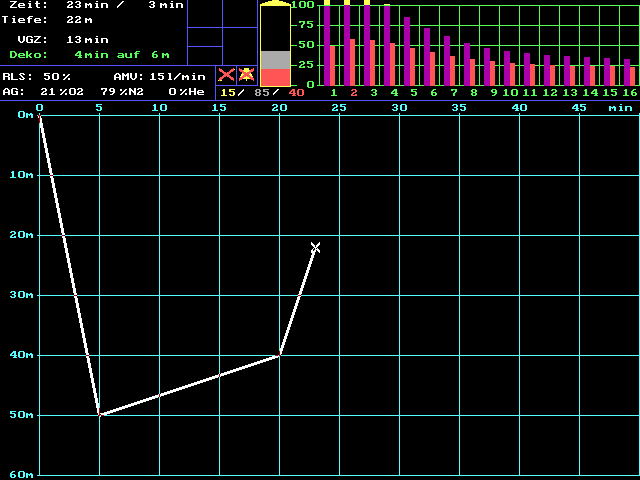
During ascending from depth it can happen that at the beginning of the ascent no decompression stop is necessary, but later on one is demanded by the dive computer. This is not an error, but is due to the method with which the ongoing of tissue (de)saturation is calculated.
The fast compartments do desaturate during ascent and by this it's possible, that the leading tissue changes. Through that a deco stop can become necessary or a previous displayed deco stop must be lengthened.
Through the following dive profile, calculated by the aid of the software TAUSIM , a short explanation of saturation and desaturation processes will be given. The calculation is performed with a 50% right-left-shunt. That is, desaturation is only half as fast as saturation takes place.
After descending to 50 m (165 ft) within 5 min and a following slow ascent to 40 m (132 ft) within 15 min, surfacing is begun. After 18 m (59 ft) within 3 min a first decompression stop is demanded at 6 m (20 ft) / 4 min. Leading tissue is compartment No. 2 (indicated in red).

Reaching a depth of 10 m (33 ft) two minutes later, the leading tissue has desaturated back to an extent, that just no deco stop is demanded. Indeed, the no-stop time is zero minutes, that means the limit exactly is reached.
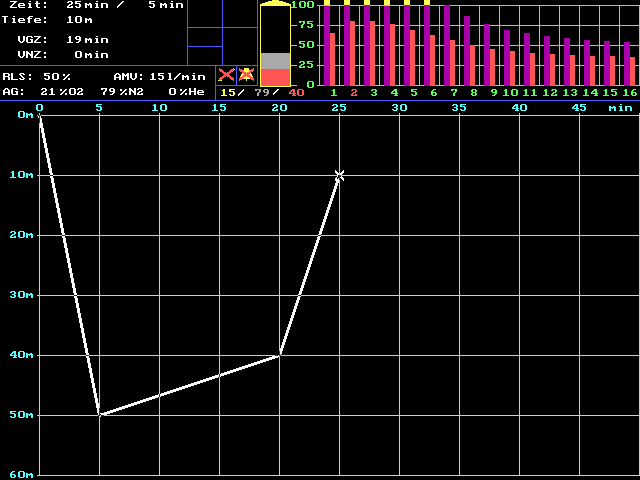
Staying at 10 m (33 ft) now compartment No. 3 becomes the leading tissue, which results in a deco stop at 6 m (20 ft) / 3 min - though the fast compartments further desaturate back !
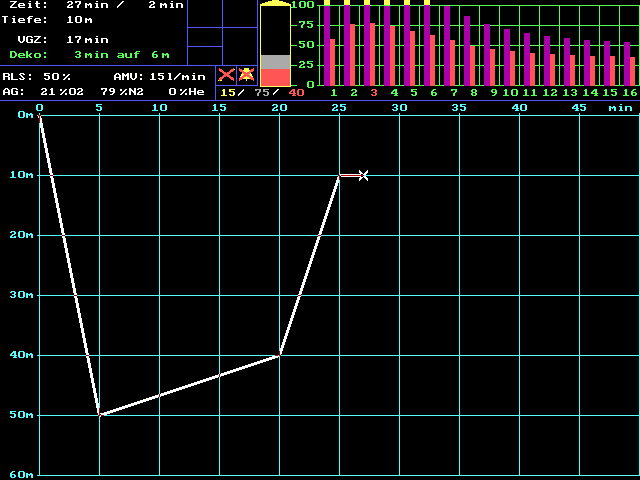
Now the ascent is continued and the diver is located at a depth of 3 m (10 ft). After staying 8 min at this depth still an additional deco stop of 3 min is demanded. Meanwhile compartment No. 4 is the leading tissue. The maximum of the red bars has shifted right to the slower tissues. The excess pressures of the compartments approach more and more the maximum tolerated values. Tissues No. 1 through 11 do desaturate, while the slow ones (No. 12 through 16) are still saturatíng.
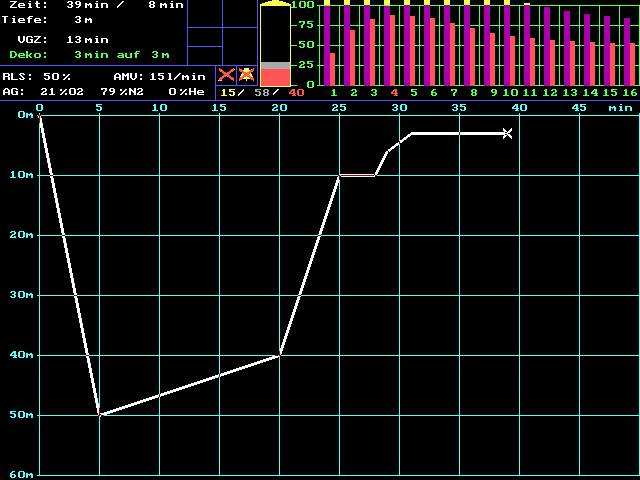
One minute later at the same depth still 3 min at 10 ft are demanded. On first sight this looks like a programming error but is due to the fact, that now compartment No. 5 has become the leading tissue. Compartment No. 5 has a slightly greater half-time than No. 4 and desaturation takes place a little bit longer therefore.
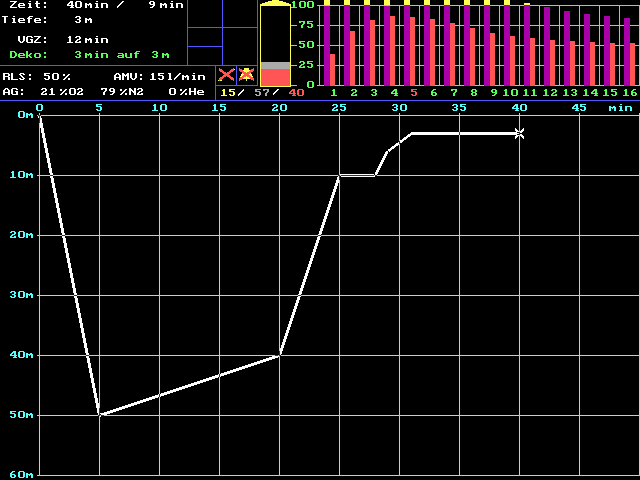
This picture demonstrates what will happen, if the demanded deco stop is dispised and the ascent is continued to the surface - which is "only" 10 ft distant. The maximum tolerated excess pressure is exceeded for the tissues No. 4, 5, and 6 when showing such a foolish behaviour and you can reckon on decompression sickness symptoms (the red bars exceed 100%) !
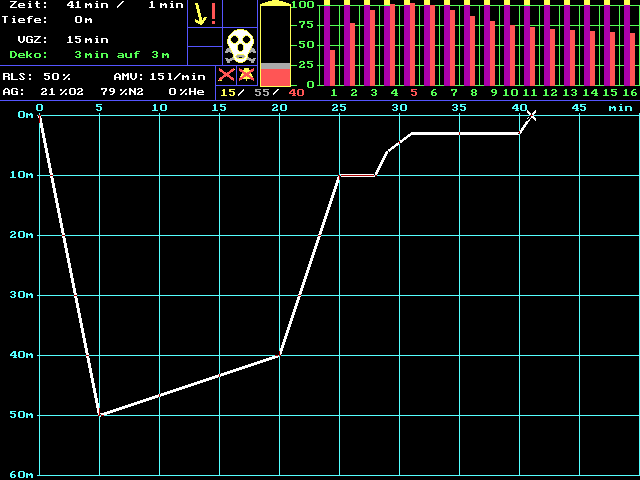
After 45 min the dive is finished. The saturation of tissue No. 5 is just below the maximum tolerated value after finishing decompression. For this dive the total desaturation to 98.5% lasts about two days !
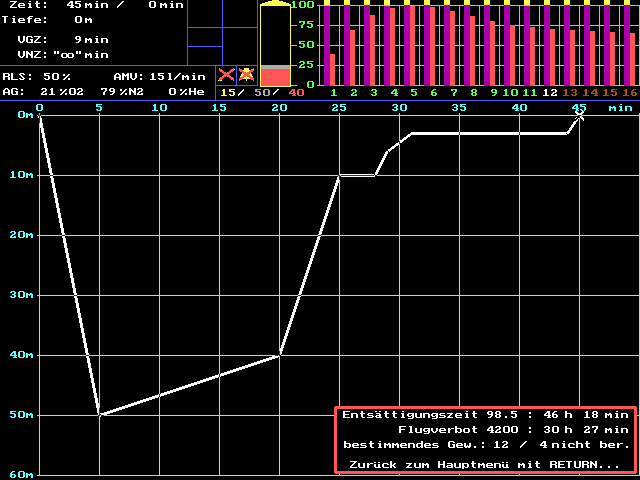
Kai Schröder , 7.1.2000